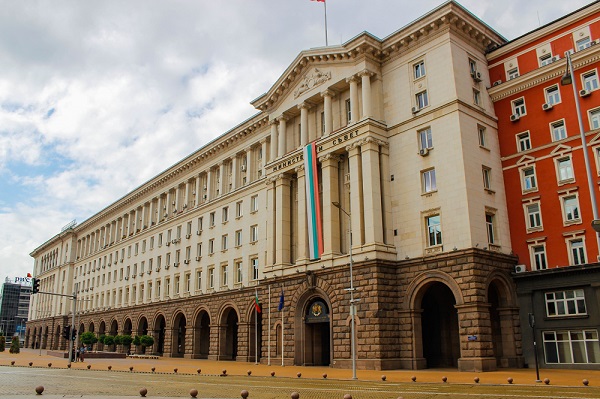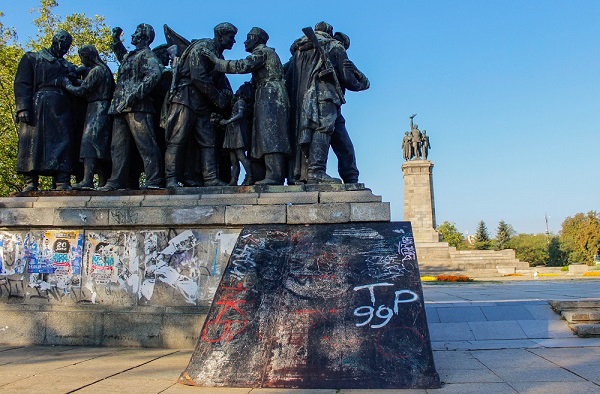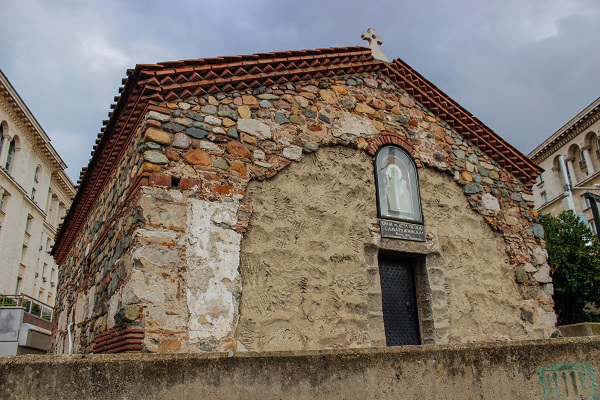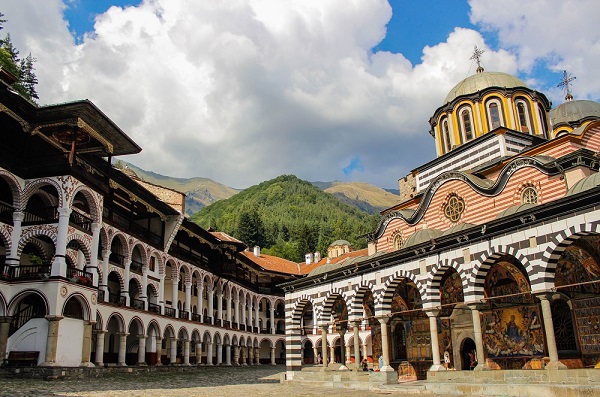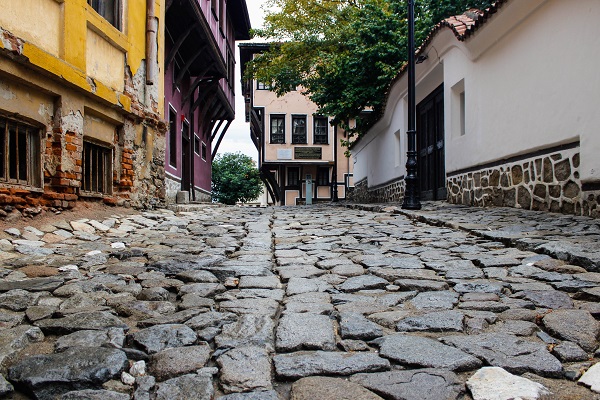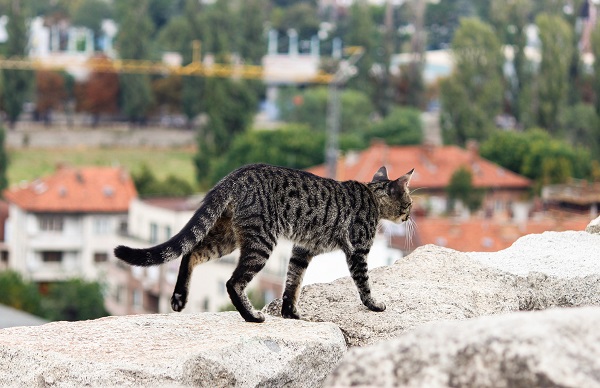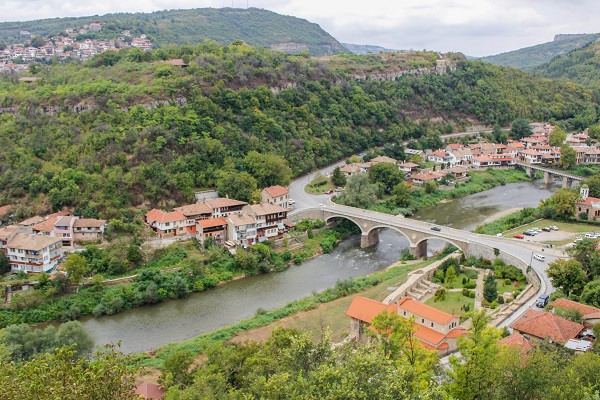The sun was still shining as I exited the airport in Sofia, the capital of Bulgaria. It was 6:30 p.m., but on a Saturday in late August, that meant I still had about two hours of daylight remaining. I ignored the touts offering me a ride and instead headed straight to the official taxi stand, where I easily hopped into a yellow taxi. I gave the cab driver the address of my hotel with confidence, speaking Russian that could sort of pass as Bulgarian because the numbers in the two languages are almost identical.
It wasn’t long before the driver rolled down the window and lit up a cigarette. Once upon a time, this would have appalled me, but after traveling around the former Soviet Union for more than a year, it seemed normal. Staring out at my surroundings, they seemed familiar. Towering concrete apartment buildings were scattered across the landscape, many likely never to be finished. Strip malls and billboards flashed now familiar Cyrillic script and I smiled as I could read most of the signs we passed.
It was almost like I was coming home.
It may have been two years since I wrapped up my 13 months in the former Soviet Union, but as I sat in that taxi, it felt like yesterday. Sure, Bulgaria was never officially part of the USSR, but it was a satellite state and for decades it was hidden on the eastern side of the infamous Iron Curtain. Years before that, Bulgaria owed its liberation from the Ottoman Empire to the Russians who fought for them in the Russo-Turkish War in 1877-78.
The Soviet and Russian influence is still clear today, from the cracking, cement-tiled sidewalks around Sofia to the gargantuan government buildings around the capital.
There’s the Russian Orthodox church and the Alexander Nevski Memorial Church – Alexander Nevksi being a key figure of medieval Rus, the predecessor to the modern Russian state.
There’s the Monument to the Soviet Army, standing in a park in central Sofia but looking more like a skateboard park than a monument of national importance.
And as I walked around Sofia early Sunday morning, I almost forgot where I was when a man called me девушка, asked me in Russian to take his photo and thanked me with спасибо afterwards.
But of course, I was in Bulgaria and I soon realized how unique and diverse the country is. Within a few block radius in Sofia, you can find an Orthodox church, a synagogue, a mosque and a Catholic church. Throughout the capital are ruins dating back to medieval times while the main drag, Vitosha Boulevard, has the lively atmosphere of almost any European capital.
Outside of Sofia, the Rila Monastery is the most colorful monastery I have ever seen, with an idyllic setting in the Pirin Mountains. The town of Blagoevgrad (which inevitably makes me think of former Illinois governor Rod Blagoevich) was surprisingly charming, with a huge pedestrian mall and outdoor cafes juxtaposed against typical Soviet area architecture. With less than 24 hours there, I was wishing I could extend my stay.
A day-long train journey took me to Plovdiv, a city that is more than 6,000 years old – one of the oldest cities in the world. Developed around seven hills and with the Maritsa River running through it, Plovdiv seemed to have every quality I love in a city.
Ancient Roman ruins around every corner? Check.

Narrow, cobblestone streets? Check.
Adorable stray cats? Check and check.
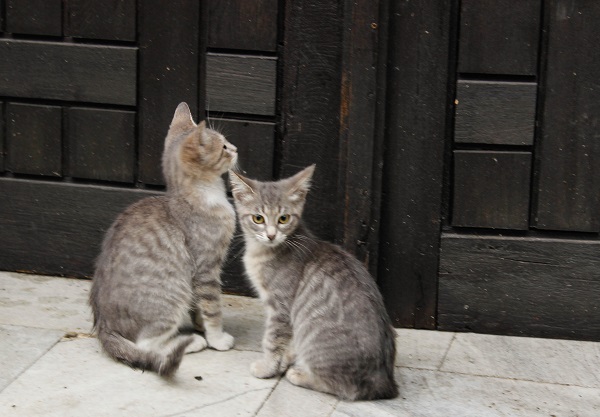
Never mind that it rained most of my second day in town; I still enjoyed a great walking tour, visited a few quaint museums and spent more than an hour exploring the old Roman amphitheater that I had almost all to myself.
Finally, there was Veliko Tarnovo, where I unfortunately found endless rain showers – but only after I managed to check out the famous Tsarevets fortress. Tsarevets was the Bulgarian Empire’s primary fortress from the 12th to 14th centuries, before being captured by the Ottomans in 1393 and has been painstakingly restored, making it an incredible place to visit. I spent a good three hours there, poking around every nook and cranny and taking in amazing views of the town and surrounding hills.
So Bulgaria was so much more than the former Soviet satellite country that I had pictured it to be in my mind. It is truly a crossroads for multiple civilizations, a place where the Roman, Bulgarian, Russian and Ottoman Empires all collide. Of course, I couldn’t help but compare it to the former Soviet countries I had visited throughout my trip, but for every similarity I found, I discovered a major difference as well. My overall conclusion? Bulgaria is incredibly unique and just waiting to be discovered.


